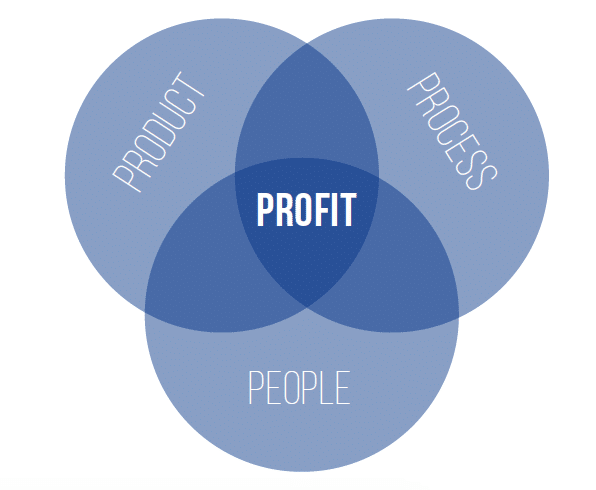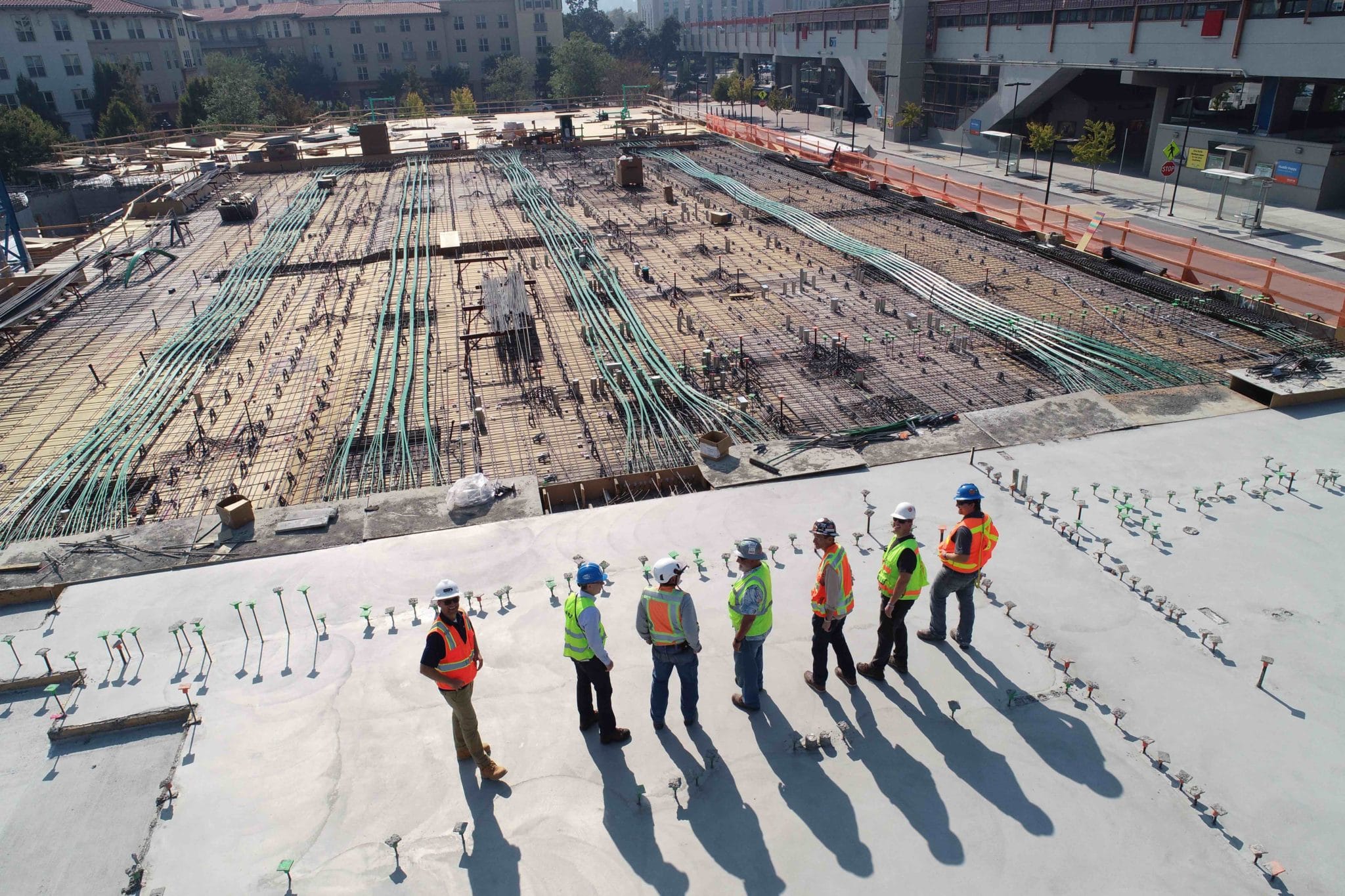In my previous posts, I wrote about the Construction Leaders Dashboard to help newly promoted team leaders become clear about their vision and the EAR Framework to lay the leadership foundations.
In this post, I focus on Kick-Ass Meetings (KAM), a straightforward, three-step process that will help Lean team leaders identify project challenges, brainstorm ideas on how to overcome those challenges, and put together an action plan. In other words, KAMs will empower executives to run positive, high-energy meetings that people will look forward to attending.
Did you know that
- 25% of meetings are spent discussing irrelevant issues?
- 50% of people find meetings to be unproductive?
- 73% of employees do other work in meetings?
Executives average 23 hours a week in meetings. 7.8 hours of that time is spent in unnecessary or poorly run meetings, which adds up to a waste of over two months a year per executive. Project those numbers over ten years, and it doesn’t require a lot of imagination to see how badly run meetings can cost a company millions of dollars in salary alone.
Lack of formal training
Let’s face it. Meetings are a necessary ingredient in the recipe for company success. The problem is that most meetings are time-consuming, too rigid, or too chaotic. Most leaders lack simple frameworks to get all meeting participants involved and ideas flowing. The next challenge is to gather those ideas skillfully so that bias and preconceived notions do not squelch creativity. Lastly, all the input needs to be narrowed down to one idea that the teams can commit to implementing.
It comes as no surprise that a lot of people have no clue about how to run a well-structured meeting because 75% of people have received no formal training on how to conduct a meeting. They don’t know how to begin the meeting with a bang to create positive energy, how to tap into the brains trust of their attendees, or how to drive towards a conclusion in a timely manner.
KAMs provide structure
Using KAM, team leaders will be able to present a problem to their team and lead through brainstorming, prioritization, and action planning.
KAM provides enough structure to keep meetings on track and on time, without the stifling rigidity of traditional agenda-driven formats.
What’s best is that Lean project managers can generate a clear, three-part, one-page action plan to hold people accountable in less than an hour.
KAM is broken down into three parts:

Illustration: Eric Anderton
Preparation is the key
You get out what you put in. Preparation is key to use KAMs efficiently.
Follow these three steps:
- Identify the problems
- Gather the team
- Make the rules
- Identify the problem
What is your project challenge? What outcomes do you want to achieve? And who are the people that drive the success of your project? Think about the three “Ps”: Product, Process, and People. All three “Ps” work together to maximise the outcome of your project.

Illustration: Eric Anderton
2. Gather the team
As a Lean team leader, focus on who you need in your weekly meeting to achieve the best outcome. Invite all parties that are involved in driving the project forward. And think about who else would be valuable from a technical or process-based perspective. Sometimes, people who are not directly involved in the process and look at the discussion with fresh eyes from an outside perspective can add immense value to the discussion.
3. Make the rules
Your job as the meeting leader is to establish the ground rules for participation. Here are the top three rules that will ensure a great meeting:
Rule #1: No Distractions
Put away mobile devices. Focus for the entire length of the meeting without distraction.
Rule #2: No Dismissing of Ideas
That means suspending judgment regarding the validity of ideas. No laughing at, mocking, or belittling others input.
Rule #3: Everyone Participates
No one gets to hide in the corner, and no one gets to dominate. Everyone who’s been invited to the meeting has been because they have something to contribute.
How to conduct a KAM
Once you’ve identified the problem, gathered the team, and set the rules, the real fun begins. It’s time to dive into the heart of Kick-Ass Meetings:
- Generate Ideas
- Gather and Prioritize
- Action Plan
KAM Part 1: Generate Ideas
The first step of a KAM is brainstorming. Use these steps to conduct a successful brainstorming session.
Step 1: Frame the Problem Clearly by asking the right questions:
In what specific ways can we improve our project?
In what specific ways can we eliminate waste?
In what specific ways can we function more effectively as a leadership team?
In what specific ways can we support each other to achieve our individual and project goals?
In what specific ways can we improve the team culture?
Step 2: Set a two-minute timer
Make sure that everyone understands the question and ask all team members to write down as many answers to the question as they can think of in the two minutes. Encourage them by saying that there are no bad ideas, and the key is quantity not quality. And remind them that specific is terrific!
Step 3: Narrow the ideas
The last part of idea generation happens immediately after the two-minute brainstorm session. Have each of the participants look at his or her list and pick the top two ideas.
Next, move on to the next part of KAM: gather and prioritize.
KAM Part 2: Gather and Prioritize
Go around the room and gather the top ideas that each meeting participant chose. Get the first idea from each participant, and write the ideas down on a flipchart or whiteboard where everyone can see them and begin to process them.
Make sure you number each idea (this will be important later on when you are narrowing the list of ideas down). When you’re asking people for their ideas, get them to be as specific as possible. If someone’s idea is a bit vague, ask for specific examples.
After you have one idea from each person, go back around (starting from the last person) and get the next idea. Getting duplicates is OK. Thank those people for their contributions, and ask them if they have any specific wrinkles they’d like to add to their ideas to further enhance them.
Once you have gathered two ideas from each participant, ask whether anyone would like to add anything else.
Depending on the size of the group, you will have generated 5 to 15 ideas. Even if every idea is awesome, you’ll never get to implementing them all. The more you talk and the less you act, the more your credibility as leader and the morale of your team will suffer.
It is time to drastically reduce the list.
Ask the participants to each choose the best third of the ideas displayed. For example, if you are looking at 15 ideas, instruct everyone to pick the best 5 separate ideas.
After everyone has chosen their top ideas, gather the votes. Start by pointing at idea #1 and ask: “By a show of hands, who selected this idea?”
Keep in mind that you are driving towards creating an action plan, and choosing one idea is vital to building a clear plan. Don’t worry about choosing the “perfect” idea. You are aiming to be directionally correct.
Once the voting has taken place and the winning idea has surfaced, address the meeting participants: “This idea has received the most votes. By a show of hands, how many of us are willing to leave this meeting, committed to implementing this idea in the next 30 days.” Adjust the time frame (30, 60, 90 days) to fit the needs of the problem your addressing, but don’t neglect the time aspect of implementation.
To keep the positive meeting energy vibrating, it must be translated into disciplined action.

Illustration: Eric Anderton
KAM Part 3: Action Plan
Now that you’ve chosen your top idea, you and your team must make a specific plan to overcome the problem, with deadlines and metrics attached.
There are three parts to the Action Planning process:
Rally Cry, Fierce Focus, Critical Numbers
Rally Cry: If you’ve done a good job identifying and articulating the best idea, then this part will be relatively simple. Build the Rally Cry around what needs to happen in order for you to be able to say with any credibility that the problem you want to solve has been addressed.
Take your best idea and translate it into a short word or phrase that paints a compelling picture of what you are seeking to accomplish, what your overall goal is.
Example:
A construction company used KAM to generate ideas on how to improve their operations. After the ‘Generate Ideas’ step, they selected: “Emphasis on cost control, tracking, and forecasting.” They translated this into the Rally Cry: “Own the Cost”
Fierce Focus: These are the big areas of activity or execution (sales, marketing, production, finance, team) that you need to focus on in order for the rally cry to be achieved. The areas of Fierce Focus will help you identify what needs to be done and who is going to be responsible for the execution of the tasks.
Example:
The construction company chose three areas of focus:
- Project Managers set up jobs for margin success.
- Superintendents develop lowest possible cost and optimize resources
- Foremen execute at the lowest possible cost.
Critical Numbers: the metrics you need to track to determine if the areas of Fierce Focus are being executed.
Example:
To achieve the “Own the Cost” Rally Cry, they chose to focus on:
- Project Manager: margin growth
- Superintendent: equipment utilization
- Foreman: cost per unit installed
Summary
Kick-Ass Meetings will empower Lean team leaders to run efficient meetings that have enough structure to keep participants on track, and enough flexibility to keep the meetings themselves engaging and interesting.
Commit to holding your people accountable for implementation. Be flexible and willing to pivot if you need to. Keep using Kick-Ass Meetings to progress through the problem-solving process and move towards achieving a profitable construction project.
Further reading
Going BIG in the Big Room
Create a Space to Play
Eric Anderton has more than two decades of career and entrepreneurial business experience, alongside 25 years of public speaking, small group facilitation and one-on-one mentoring. He is a trusted leadership advisor, executive mentor and expert meeting facilitator for construction companies that range in revenue from $10 million - $1 billion. He has a BA in History and has spent almost 30 years studying ancient and modern history, leadership and strategic principles. Since 2004 he has helped his clients increase profitability by clarifying their business purpose, building strategic plans, developing their best people, systematically innovating through obstacles, and executing their most important priorities.




